Steering through the ever-evolving market landscape in New York presents unique challenges for businesses. A thorough understanding of economic indicators and consumer preferences is essential. Companies must also remain vigilant regarding competitor strategies and regulatory changes. Flexibility and adaptability are critical for success. As businesses seek to thrive in this competitive environment, the question arises: what specific strategies can effectively address these challenges and foster growth amidst uncertainty?
Understanding the Current Economic Landscape
How does the current economic landscape in New York influence market dynamics? The diverse economy of New York plays a vital role in shaping its market behavior. Factors such as fluctuating employment rates, consumer spending patterns, and real estate trends greatly impact business operations. The financial sector, being a major pillar, drives investment and innovation while attracting global talent. Additionally, the ongoing challenges of inflation and supply chain disruptions have compelled businesses to adapt their strategies. Local policies and regulations further influence market stability, affecting everything from small businesses to multinational corporations. Understanding these elements is essential for stakeholders aiming to navigate the complexities of New York’s economic environment and capitalize on emerging opportunities. Furthermore, the state’s gaming revenue distribution supports local and community projects, enhancing overall economic resilience.
Identifying Key Market Trends
Identifying key market trends requires a thorough analysis of economic indicators that reflect the overall health of the market. Additionally, observing consumer behavior offers insights into shifting preferences and demands. Finally, monitoring competitor strategies helps businesses adapt and remain competitive in a rapidly changing environment. Furthermore, understanding the role of fintech innovation in shaping consumer expectations can provide valuable context for market changes.
Analyzing Economic Indicators
As economic conditions fluctuate, understanding key market trends becomes essential for maneuvering the New York market effectively. Analyzing economic indicators, such as GDP growth, unemployment rates, and inflation, provides valuable insights into market health. These metrics enable stakeholders to assess current conditions and anticipate future shifts. For instance, a rising unemployment rate may signal economic downturns, prompting businesses to adjust strategies. Conversely, robust GDP growth could indicate opportunities for expansion and investment. Additionally, monitoring consumer spending patterns and housing market data can further inform investment decisions. By staying attuned to these indicators, market participants can make informed choices, align their strategies with economic realities, and enhance their potential for success in the dynamic New York market.
Observing Consumer Behavior
Understanding consumer behavior is crucial for recognizing key market trends, especially in a dynamic environment like New York. Changes in preferences, spending habits, and lifestyle choices can greatly impact various sectors. Observing these shifts enables businesses to adapt their strategies accordingly. For instance, increased interest in sustainable products reflects a growing consumer demand for environmentally friendly options. Additionally, the rise of online shopping indicates a preference for convenience and accessibility. By analyzing data from social media, surveys, and purchase patterns, companies can gain insights into evolving consumer needs. This understanding helps businesses to tailor their offerings, improve customer engagement, and ultimately drive sales. Staying attuned to these behavioral changes is essential for maintaining a competitive edge in New York’s fast-moving market.
Monitoring Competitor Strategies
While consumer behavior provides valuable insights into market dynamics, monitoring competitor strategies is equally essential for businesses aiming to thrive in New York’s competitive landscape. By closely observing the tactics employed by competitors, companies can identify emerging market trends and adjust their own strategies accordingly. This involves analyzing pricing models, promotional activities, and product offerings. Additionally, understanding competitors’ strengths and weaknesses can reveal opportunities for differentiation and innovation. Utilizing tools such as market analysis reports and competitive intelligence software can enhance this process. Ultimately, staying informed about competitor strategies enables businesses to anticipate shifts in the market, respond proactively, and maintain a competitive edge in the ever-evolving New York market.
Analyzing Consumer Behavior Shifts
Recent observations reveal notable shifts in consumer purchasing habits, reflecting broader economic influences. Factors such as inflation, employment rates, and changing disposable incomes are reshaping how individuals approach spending. Understanding these dynamics is essential for businesses aiming to adapt to the evolving New York market landscape. Additionally, changes in SNAP benefits can significantly impact consumer spending patterns, as they affect the purchasing power of low-income households.
Trends in Purchasing Habits
How have consumer preferences evolved in the bustling New York market? Recent analysis indicates a significant shift towards online shopping, with New Yorkers increasingly favoring convenience and speed. The rise of e-commerce platforms has led consumers to prioritize digital experiences, impacting traditional brick-and-mortar sales. Moreover, there is a growing preference for sustainable and ethically sourced products, reflecting heightened environmental awareness among shoppers. This trend is evident in the popularity of local businesses and organic goods. Additionally, social media influencers play a pivotal role in shaping purchasing decisions, especially among younger demographics. As a result, brands must adapt to these evolving habits by enhancing their online presence and aligning their offerings with consumer values to remain competitive in this dynamic landscape.
Impact of Economic Factors
As economic conditions fluctuate, consumer behavior in New York adapts in response to factors such as inflation, employment rates, and overall economic stability. During periods of rising inflation, consumers tend to prioritize essential goods over luxury items, leading to a shift in retail dynamics. Additionally, high unemployment rates can cause a decrease in discretionary spending, prompting businesses to adjust their marketing strategies. Conversely, when employment rates improve, there is generally an uptick in consumer confidence, resulting in increased spending across various sectors. Overall, understanding these economic factors is vital for businesses to effectively navigate the market landscape and tailor their offerings to meet the evolving needs of consumers. Adapting to these changes guarantees resilience in a competitive environment.
Developing a Robust Business Strategy
In an ever-evolving market like New York, what strategies can businesses implement to remain competitive and resilient? Developing a robust business strategy is essential. Companies should start by conducting thorough market analysis to identify trends, consumer preferences, and competitive landscapes. Establishing clear goals and objectives will guide decision-making processes. Diversification of products or services can mitigate risks associated with market fluctuations. Additionally, fostering strong relationships with suppliers and customers enhances stability and loyalty. Regularly reviewing and adapting the strategy in response to market changes guarantees relevance. Investing in employee training and development promotes innovation and efficiency within teams. Ultimately, a proactive approach to strategy development positions businesses to navigate challenges and capitalize on emerging opportunities in New York’s dynamic marketplace. Furthermore, understanding the economic landscape of New York is crucial for informed strategic planning.
Leveraging Technology for Market Insights
What tools can businesses employ to harness the power of technology for valuable market insights? Companies can utilize data analytics platforms to process large datasets, identifying trends and consumer behavior patterns. Customer relationship management (CRM) systems can provide personalized insights by tracking customer interactions and preferences. Social media analytics tools enable businesses to monitor brand sentiment and engage with their audience effectively. Additionally, artificial intelligence algorithms can forecast market trends by analyzing historical data. Geographic information systems (GIS) allow businesses to visualize and analyze location-based data, which is essential for targeting specific demographics. By integrating these technologies, businesses can make informed decisions, adapt to market changes, and ultimately enhance their competitive edge in New York’s dynamic landscape. Moreover, understanding urban planning policies can help businesses navigate regulatory frameworks that affect market dynamics.
Building a Strong Network of Resources
While maneuvering through the complexities of the New York market, businesses benefit greatly from establishing a robust network of resources. This network can include industry contacts, local business organizations, and community leaders, all of whom offer valuable insights and support. By cultivating relationships with experienced professionals, companies gain access to essential information regarding market trends and best practices. Additionally, attending networking events and joining professional associations can further enhance visibility and credibility within the market. Collaborating with other businesses may also lead to strategic partnerships that drive innovation and growth. Ultimately, a strong network empowers businesses to navigate challenges more effectively and seize opportunities that arise in the dynamic New York landscape.
Adapting to Regulatory Changes
Regulatory changes in New York can greatly impact business operations, requiring companies to remain agile and informed. Organizations must closely monitor new legislation, zoning laws, and compliance requirements that may affect their market strategies. Establishing a dedicated team to analyze these changes can guarantee timely adaptation. Additionally, integrating technology solutions can aid in tracking regulatory updates and streamlining compliance processes. Communication with industry associations and legal experts is vital for interpreting the implications of new regulations. By fostering a culture of adaptability, businesses can mitigate risks associated with regulatory shifts. Staying proactive, rather than reactive, will position companies to leverage opportunities that arise from changes in the regulatory landscape, ultimately contributing to long-term success in a competitive environment.
Embracing Flexibility and Innovation
As businesses face a rapidly evolving market landscape, embracing flexibility and innovation becomes essential for sustained growth. Companies in New York must adapt to shifting consumer preferences, emerging technologies, and competitive pressures. By fostering a culture of innovation, organizations can identify new opportunities and respond swiftly to market demands. This involves investing in research and development, encouraging creative problem-solving, and leveraging data analytics to inform strategic decisions. Flexible business models, such as remote work and agile project management, enable teams to pivot quickly in response to changes. Additionally, collaboration with startups and tech firms can enhance a company’s innovative capacity. Ultimately, those who prioritize adaptability and creativity will be better positioned to thrive in an increasingly dynamic environment.
Frequently Asked Questions
What Are the Best Neighborhoods for Starting a New Business in NYC?
Determining the best neighborhoods for starting a new business in NYC involves considering areas like Brooklyn’s Williamsburg, Manhattan’s Lower East Side, and Queens’ Astoria, which offer vibrant communities, diverse demographics, and growing consumer bases.
How Can I Find Local Market Research Resources?
To find local market research resources, one should explore public libraries, local chambers of commerce, and online databases. Networking with local business associations can also provide valuable insights and connections for detailed market analysis.
What Is the Average Cost of Commercial Space in NYC?
The average cost of commercial space in New York City varies markedly by location, size, and type. As of late 2023, prices typically range from $50 to over $100 per square foot annually.
Where Can I Connect With Local Entrepreneurs and Business Owners?
Local entrepreneurs and business owners can connect through networking events, industry meetups, and co-working spaces in New York City. Online platforms like Meetup and LinkedIn also facilitate connections among professionals in various sectors.
What Grants Are Available for Small Businesses in New York?
Various grants for small businesses in New York include the New York State Small Business Credit Initiative, NYC Department of Small Business Services grants, and federal programs like the SBA’s 7(a) and 504 loan programs.
Conclusion
In summary, successfully steering through the dynamic New York market requires businesses to remain vigilant and adaptable. By understanding the economic landscape, identifying market trends, and analyzing consumer behavior, companies can develop effective strategies. Leveraging technology for insights and fostering strong networks will enhance competitiveness, while embracing flexibility and innovation will allow for quick responses to changes. Ultimately, a proactive approach will position businesses to thrive amidst the complexities of this vibrant marketplace.

